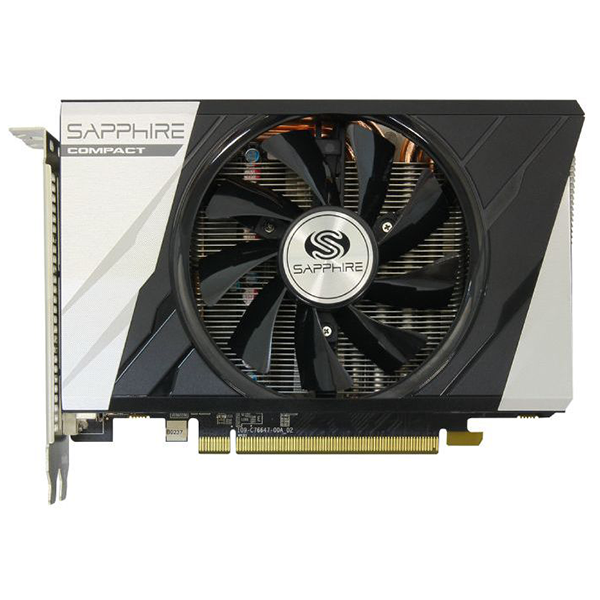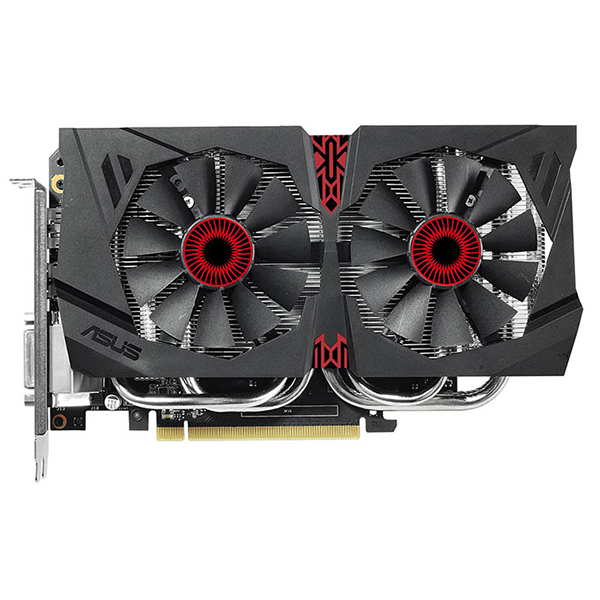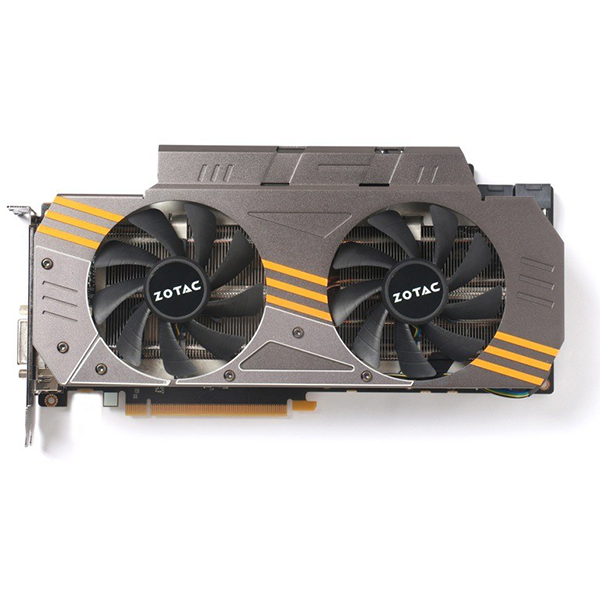XFX Radeon R7 370 2GB Black Edition Review
Why you can trust Tom's Hardware
Gaming Benchmark Results
Comparison Graphics Cards
Battlefield
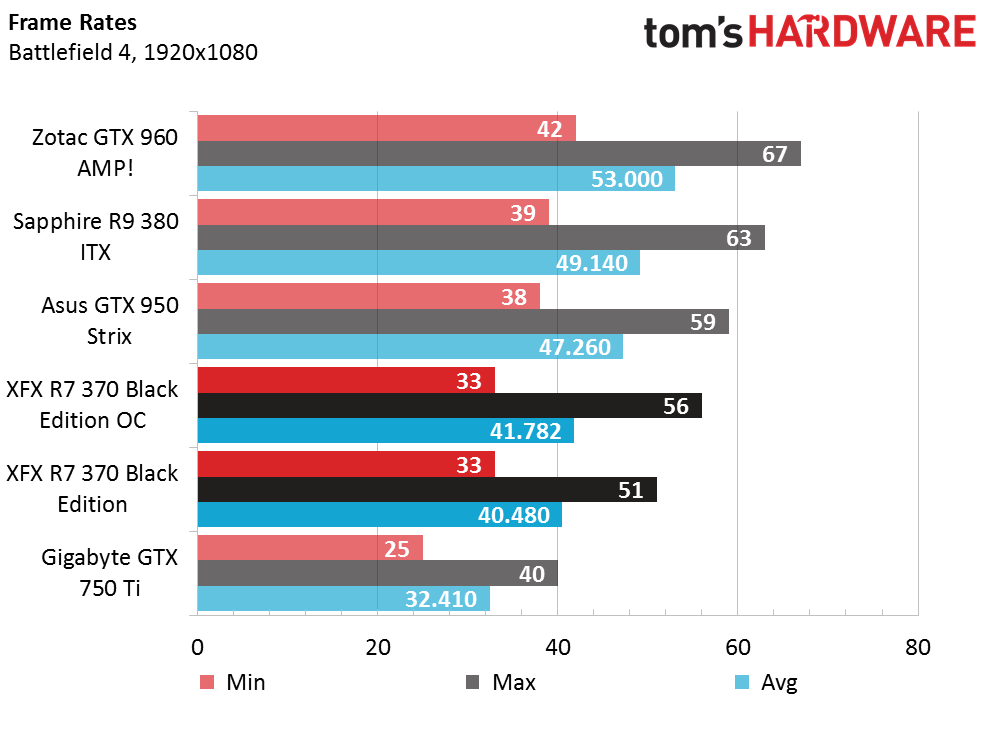
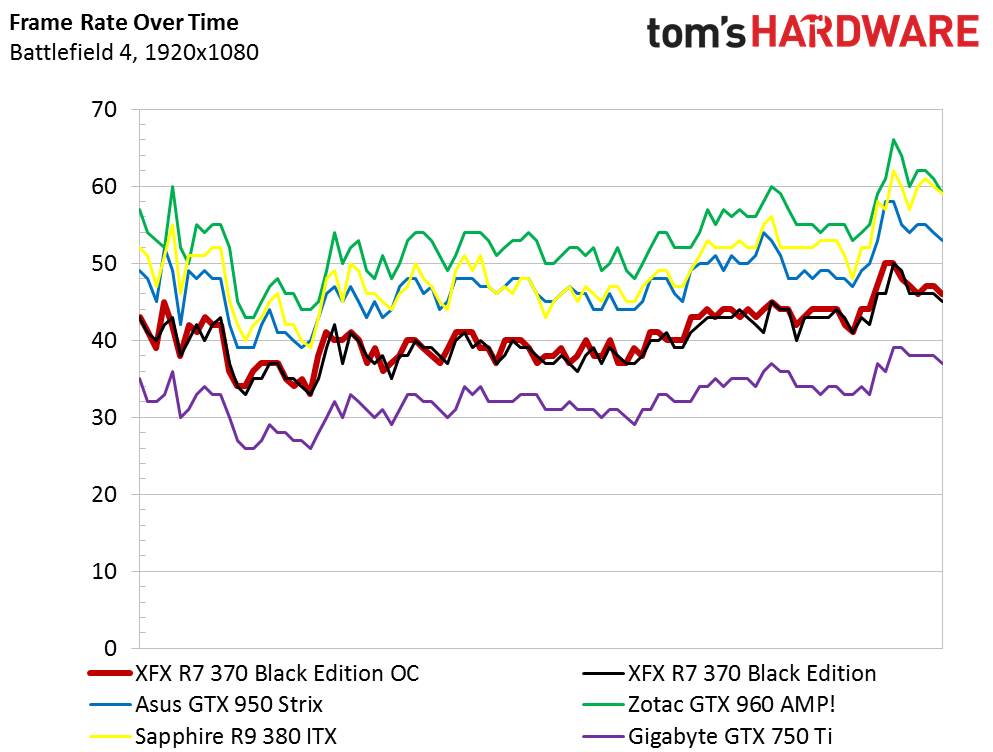
In Battlefield 4, XFX’s R7 370 Black Edition handles 1080p at Ultra quality fairly well. It doesn't average the 60 FPS many gamers want to see, but it never dipped below 30 either. Overclocking the card yields a small speed-up, though you'll still want to dial back your detail preset for smoother performance.
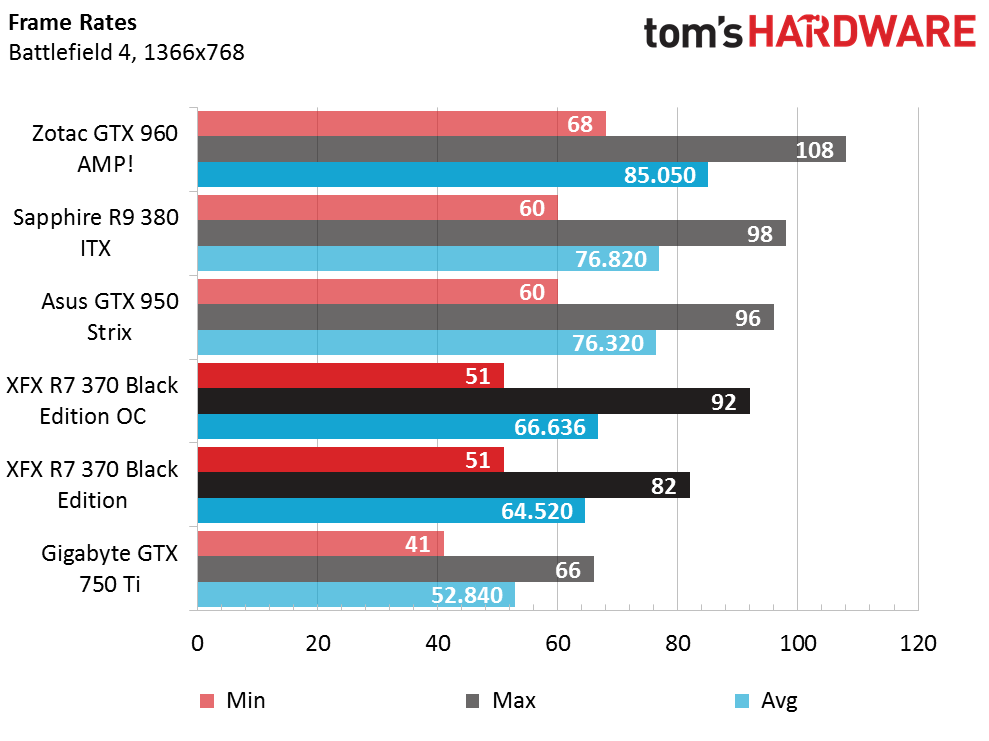
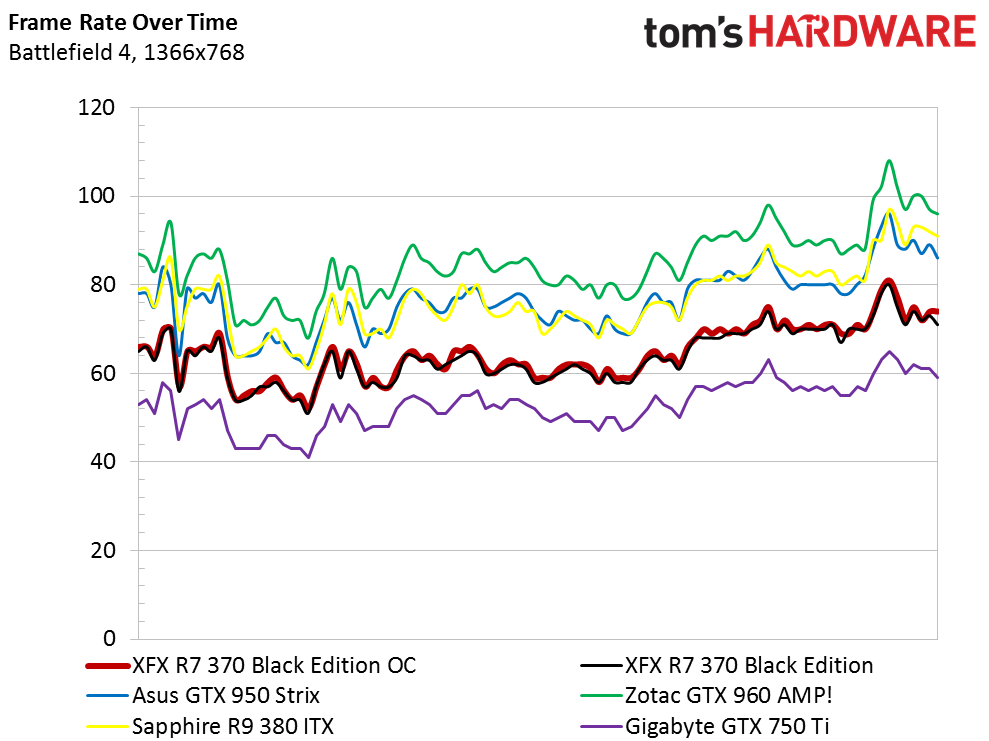
At a lower resolution, XFX’s R7 370 Black Edition breaks above that 60 FPS average. It manages a sizable lead over the GeForce GTX 750 Ti, but trails Nvidia's GeForce GTX 950, which recently took over a similar price point.
Far Cry 4
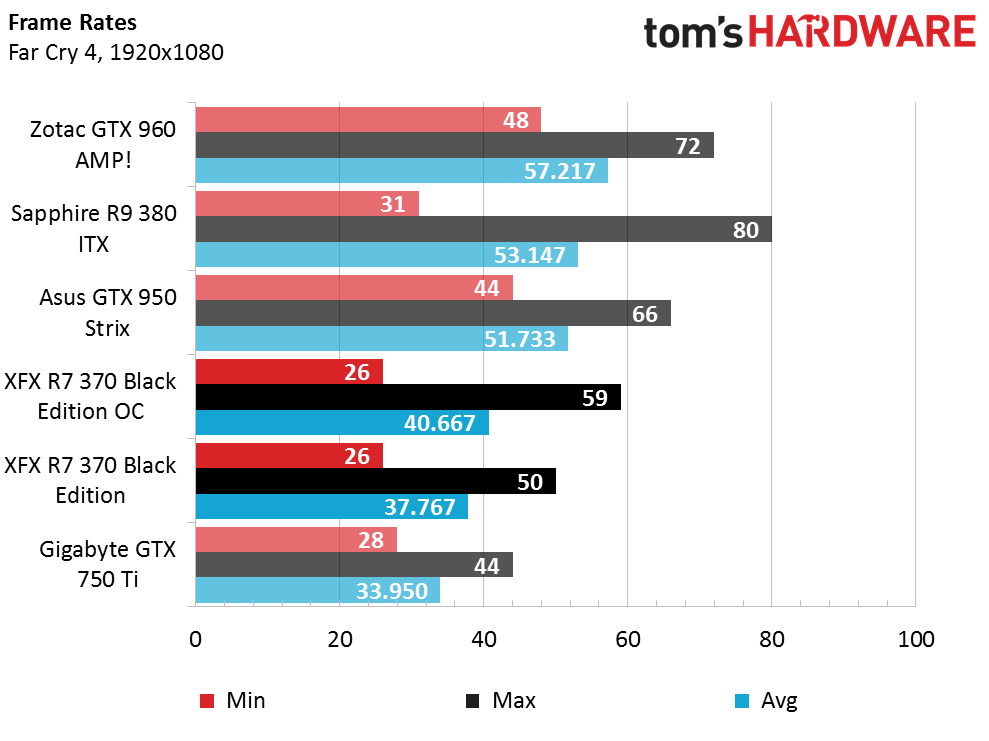
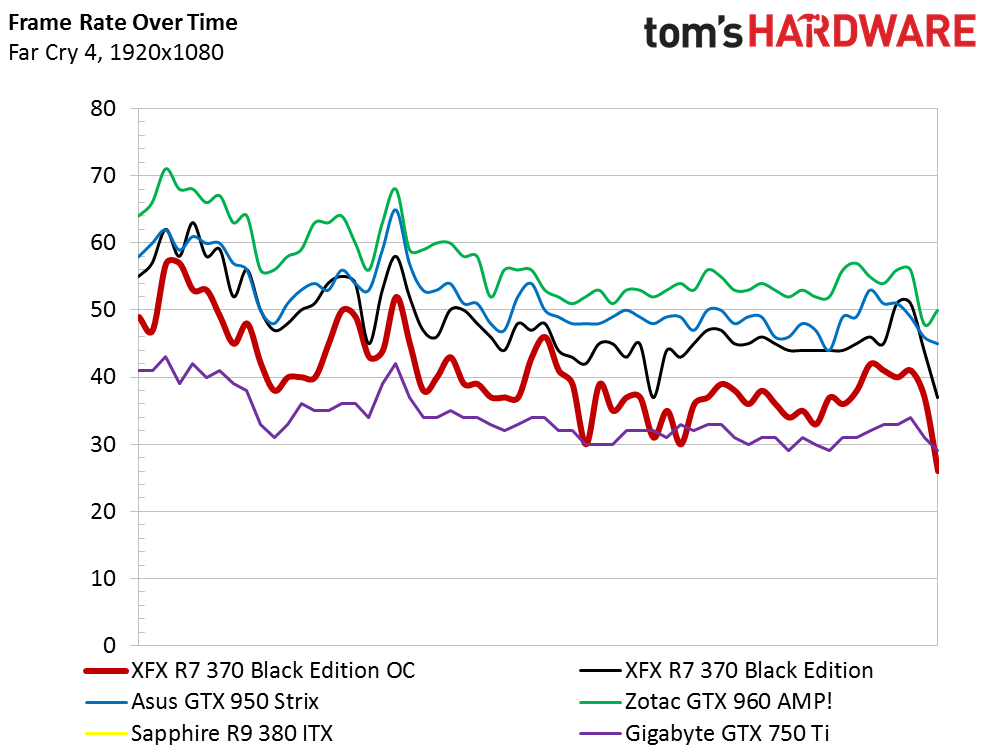
XFX’s R7 370 Black Edition doesn't fare well in Far Cry 4. For some reason the game is particularly hard on AMD's hardware, evidenced by the R9 380's dip to 31 FPS. The Radeon R7 370 maintains a higher average frame rate than the GTX 750 Ti, though Nvidia's card doesn't fall as low as AMD's. Even after overclocking, the 370 dips down to 26 FPS.

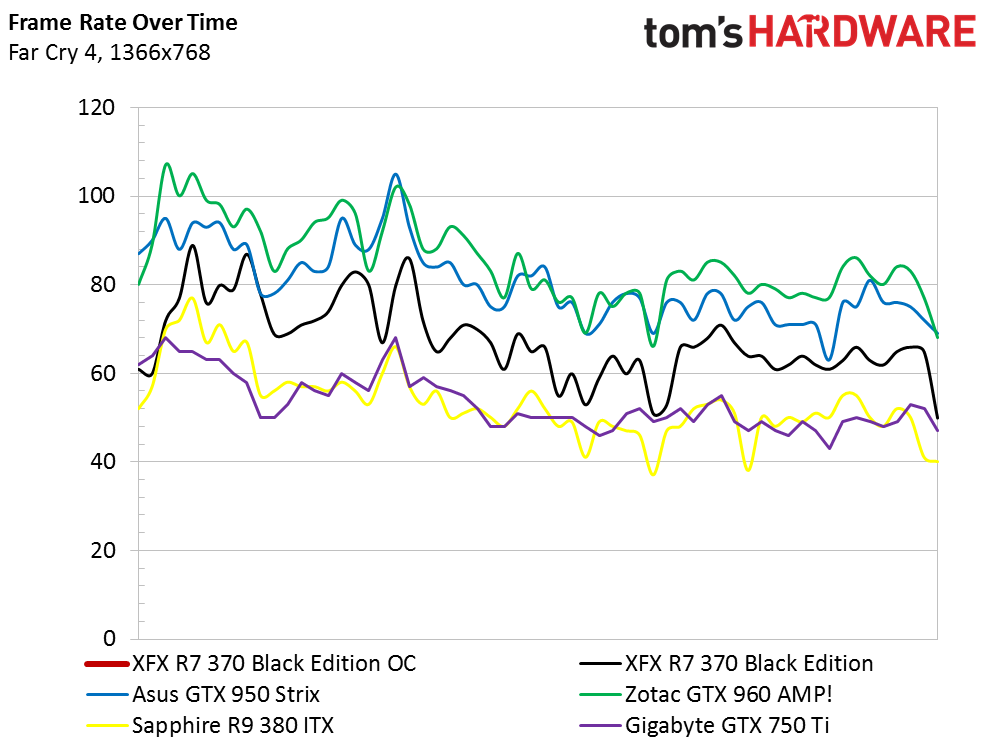
Lowering the resolution gets performance into a more playable range, though if you want to break past 60 FPS on average, you'll still need to relax the quality settings. Nvidia's GeForce GTX 750 Ti still maintains a higher average and doesn't dip as low in our minimum measurements.
Grand Theft Auto V
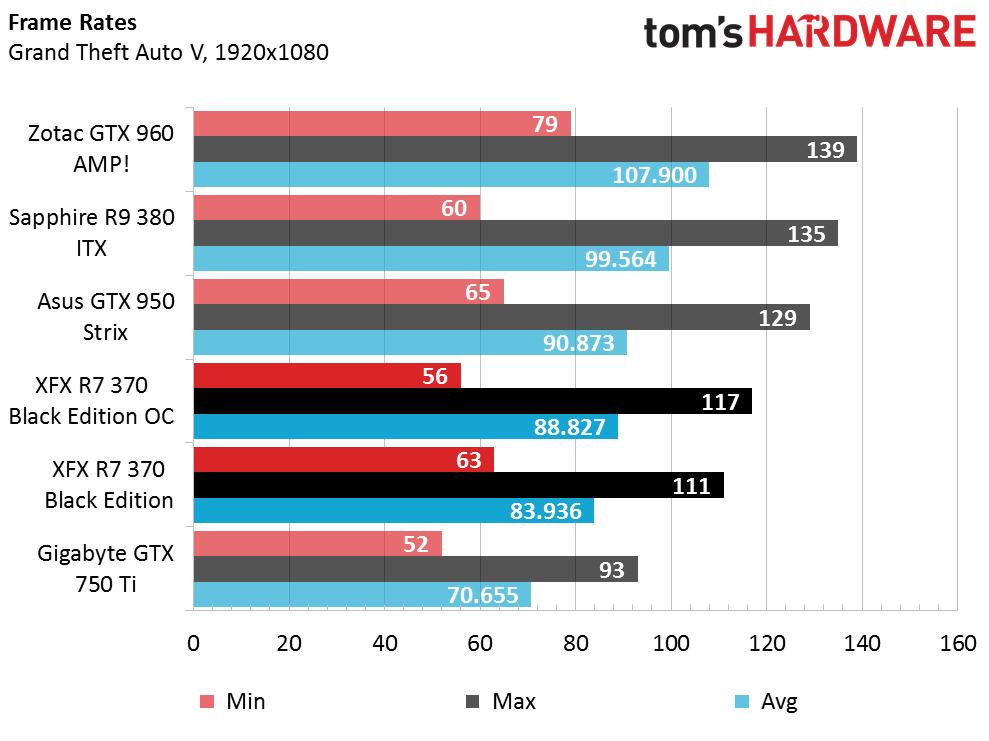
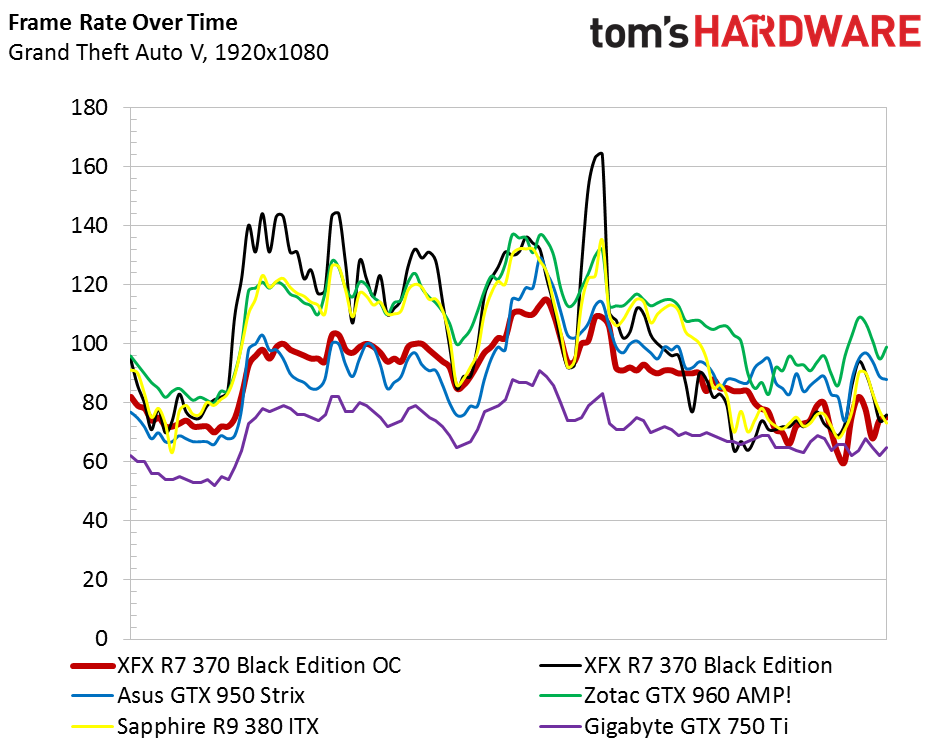
In Grand Theft Auto V, the R7 370 Black Edition is far more competitive. It stays above 60 FPS most of the time using our settings. The GeForce GTX 750 Ti is left in the dust, and the GTX 950 can't carve out much of a lead. After overclocking, XFX's R7 370 is nipping at the heels of Nvidia's latest.
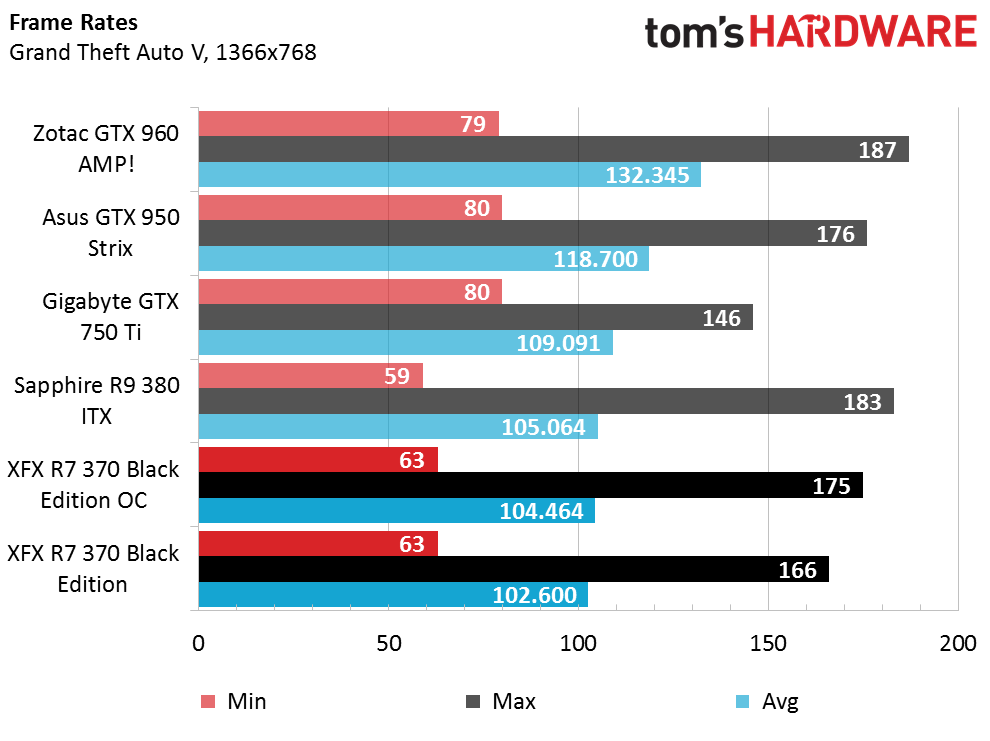

Dropping the resolution helps the R7 370 in GTA 5, establishing an average frame rate in excess of 100 and never dipping below 60. Curiously, the Sapphire R9 380 ITX we recently reviewed registers a lower minimum, and overall, the 370 performs almost on par.
It would seem that Nvidia's architecture is better-optimized for this resolution; the GeForce GTX 750 Ti is 17 FPS higher than AMD's cards.
Get Tom's Hardware's best news and in-depth reviews, straight to your inbox.
Metro: Last Light
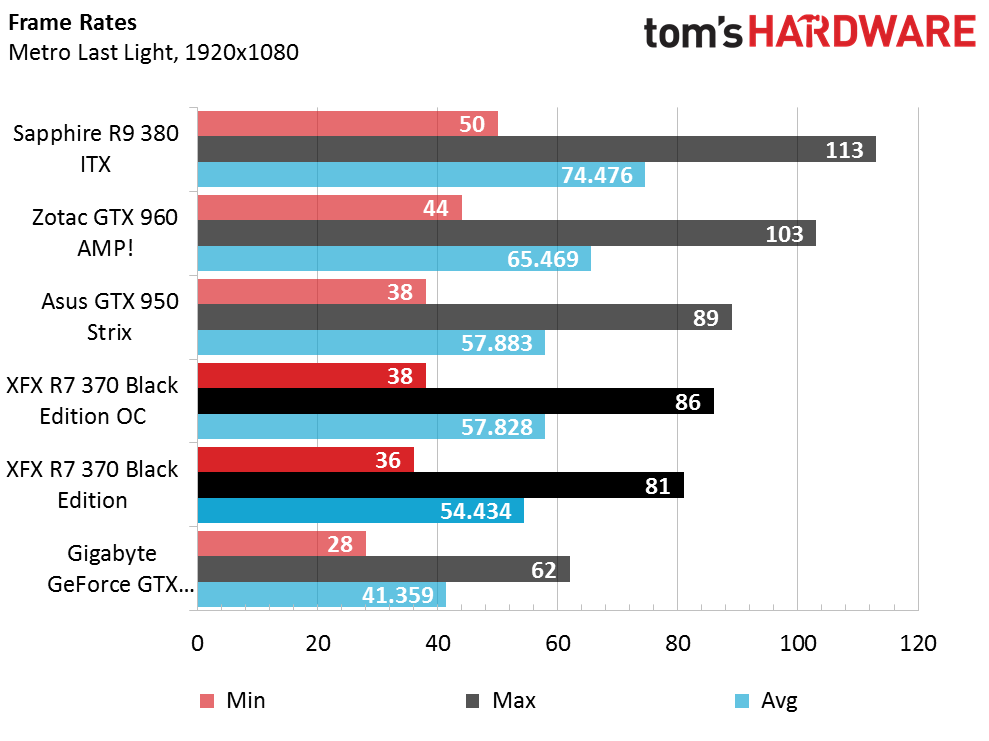
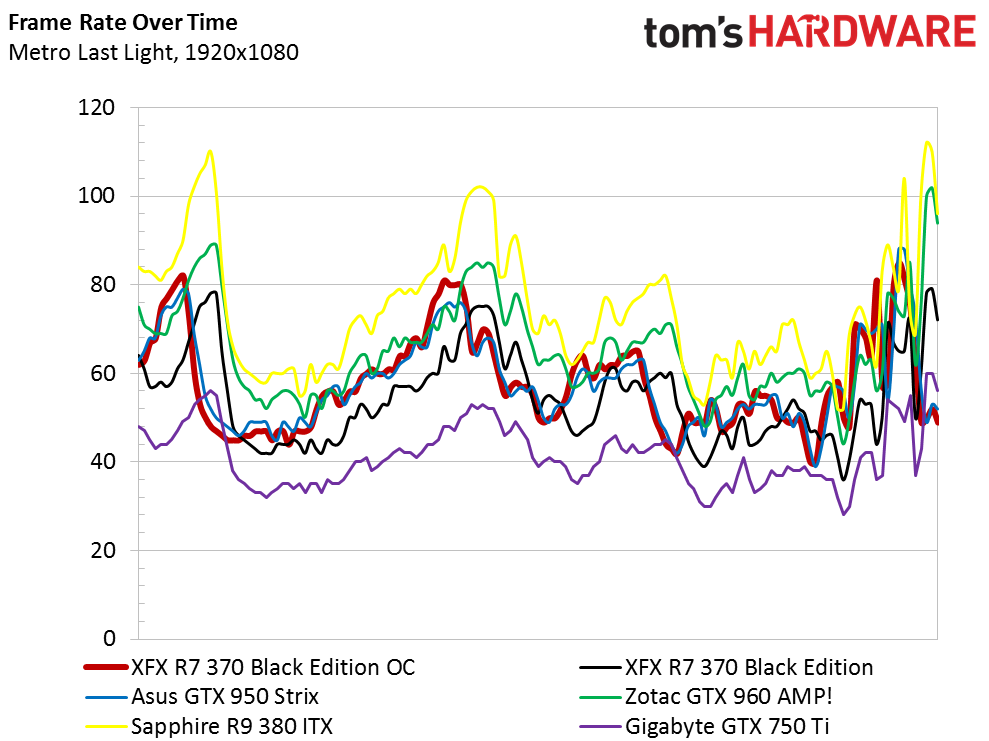
XFX’s R7 370 Black Edition performs well in Metro: Last Light, trailing the GeForce GTX 950 by a small margin. After overclocking, this gap essentially closes. Both cards average just shy of 60 frames per second, and dip into the higher 30s at certain. The GTX 750 Ti can’t keep up in this game.
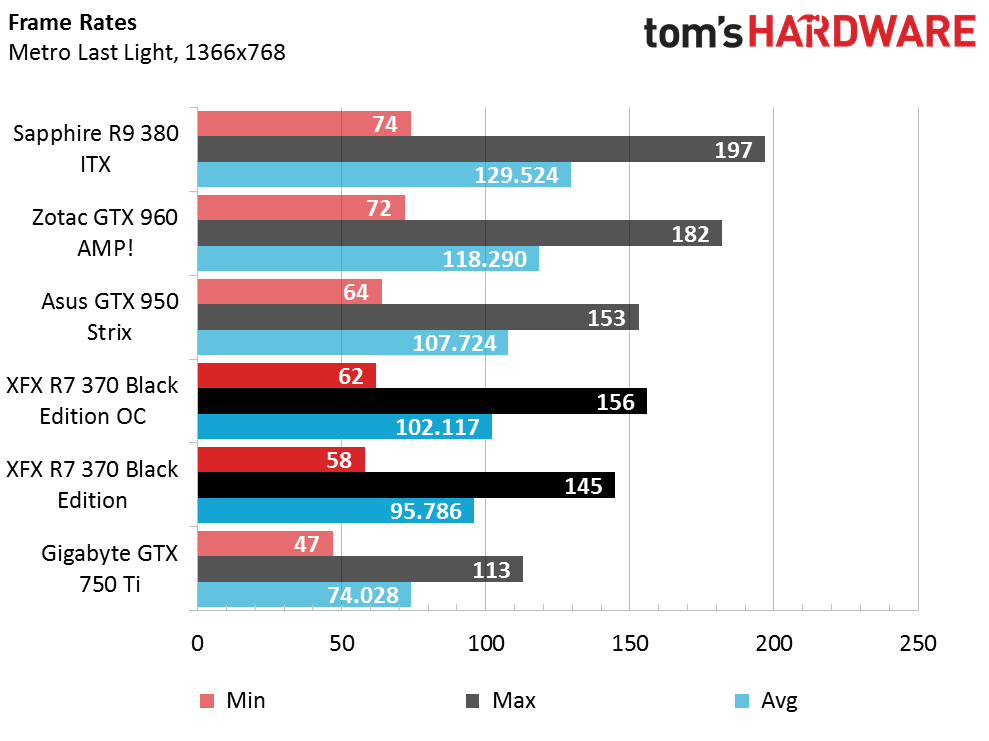
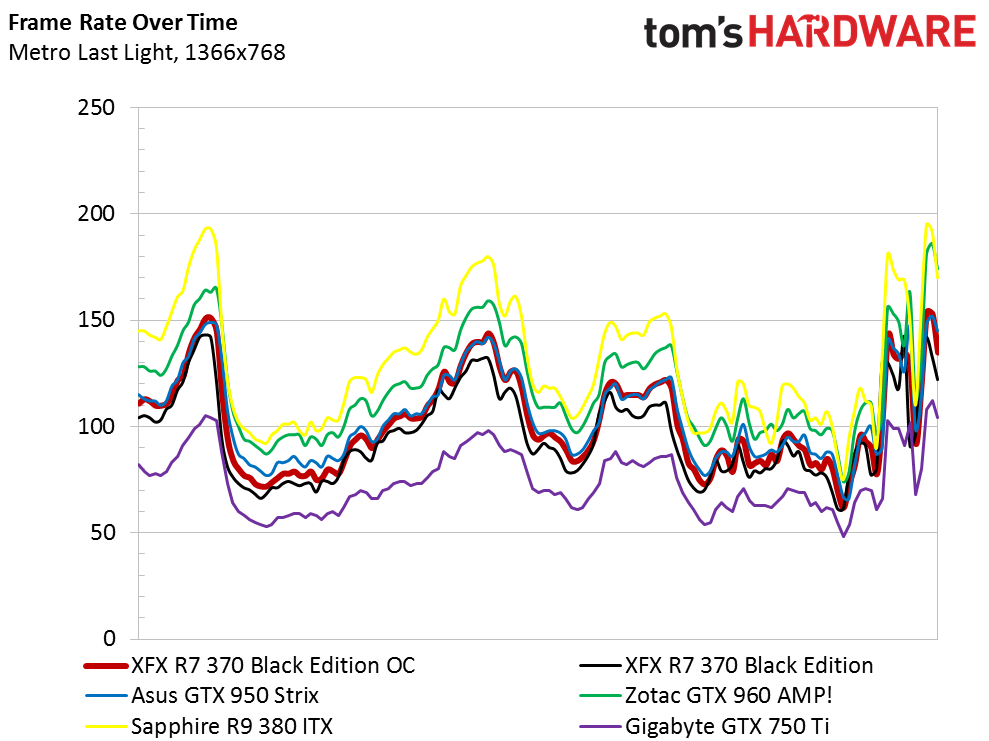
The R7 370 Black Edition is slightly slower than the GTX 950 at this lower resolution, but leaves the GTX 750 Ti trailing far behind. Our tests are performed with tessellation turned off, but it would be easy to enable it for increased geometry detail with plenty of performance to spare.
Middle-earth: Shadow of Mordor
In Shadow of Mordor, XFX’s R7 370 Black Edition averages 15 FPS more than the GeForce GTX 750 Ti and trails the GTX 950 by just a hair. After overclocking, the R7 370 manages a gain over the 950 and is only a few FPS slower than the pricey GeForce GTX 960.
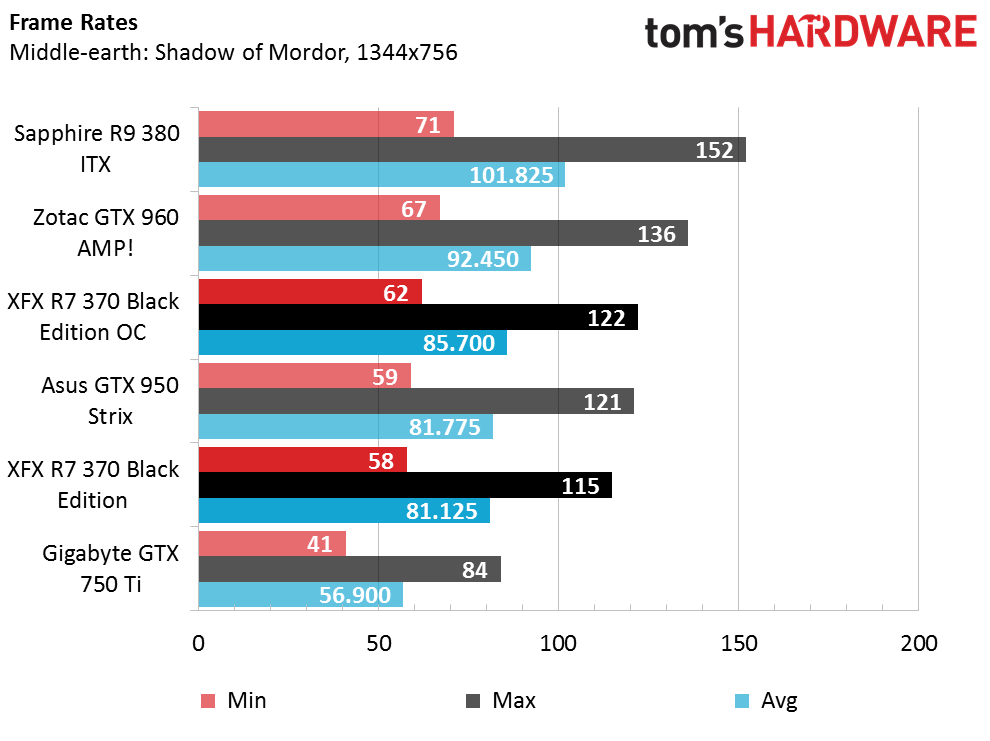
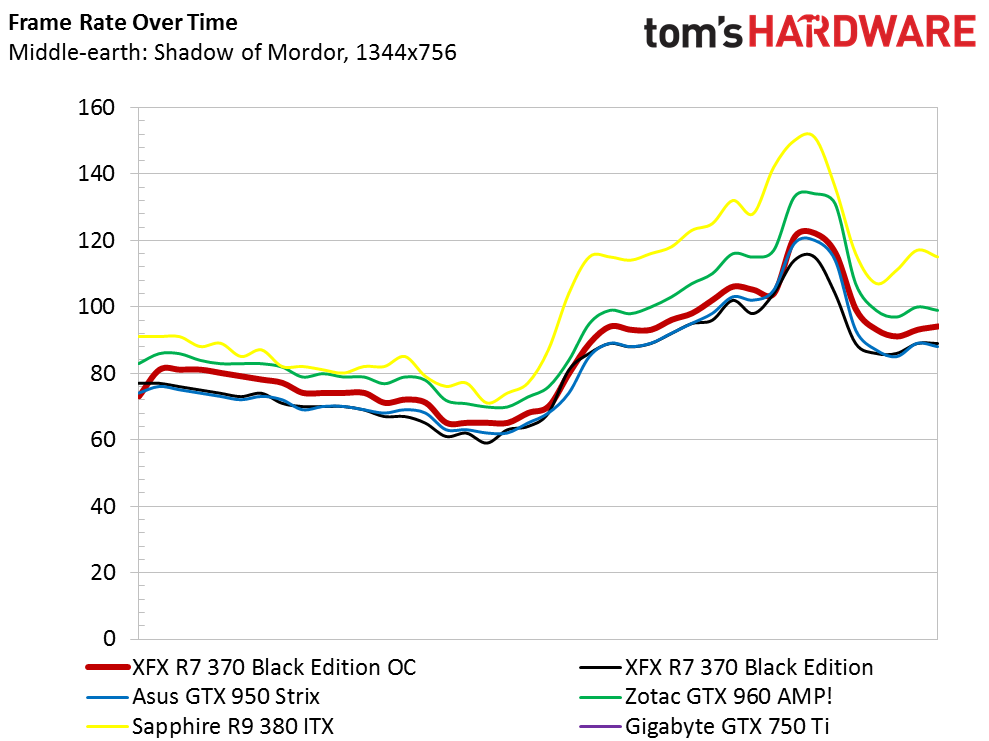
For desktop gamers on a 1366x768 display, the R7 370 Black Edition runs Shadow of Mordor beautifully. You'll rarely see fewer than 60 frames per second. Our overclocked configuration pushes performance beyond the GeForce GTX 950, though Nvidia's GTX 960 maintains a significant lead. The GeForce GTX 750 Ti can't even compete; it doesn't average more than 60 FPS at these settings.
Tomb Raider
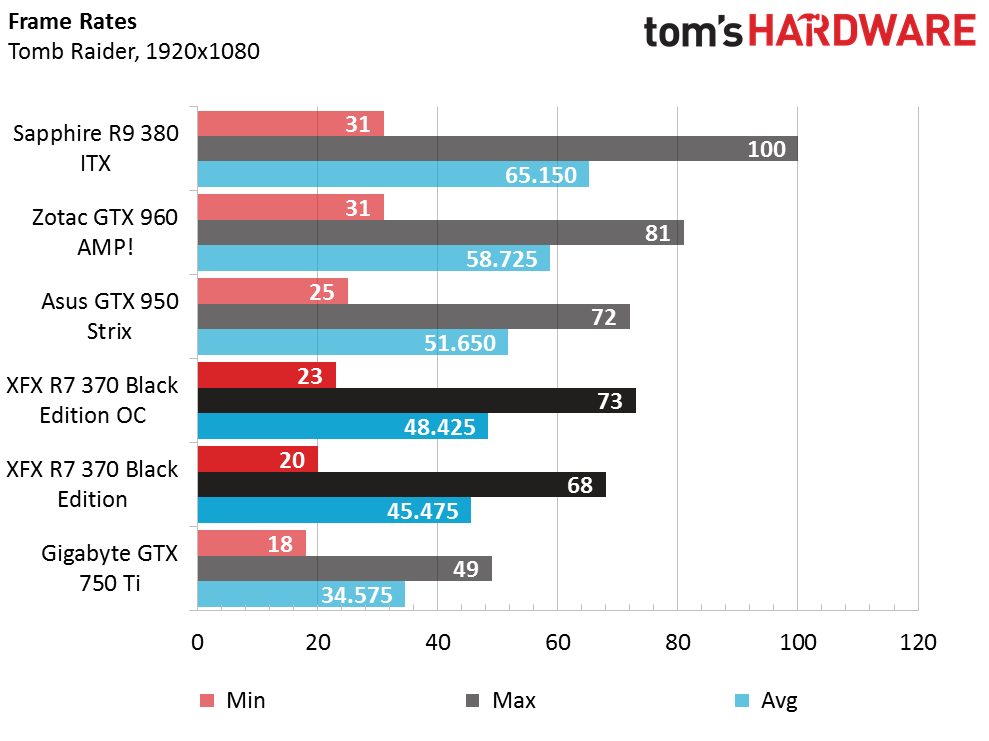
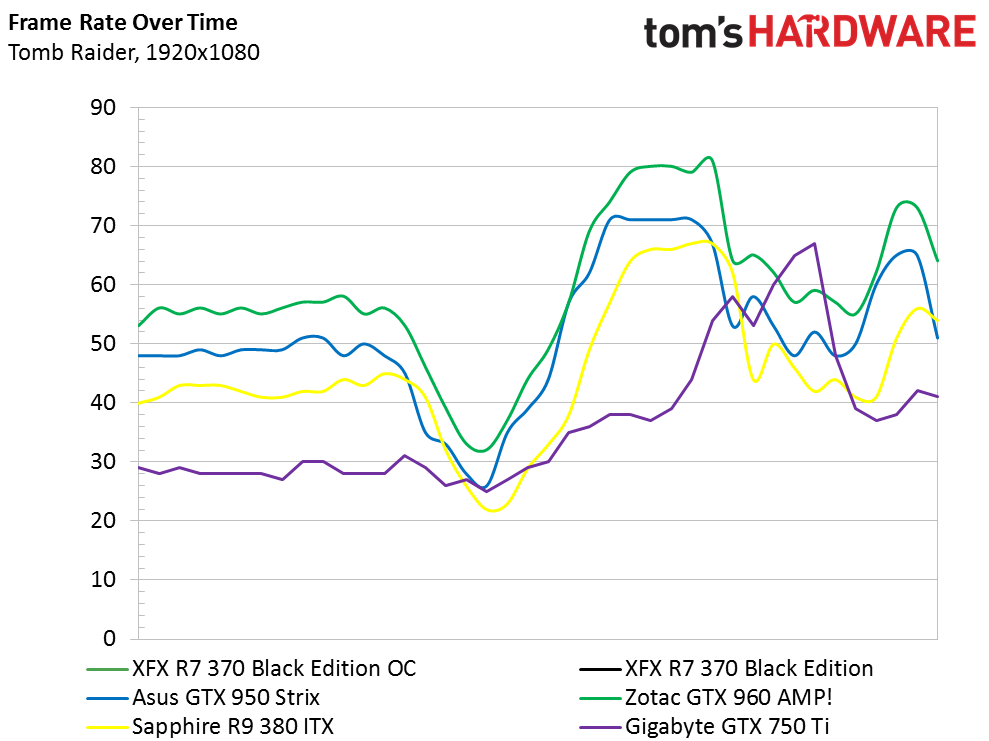
Tomb Raider is an older title, but it is still one of the most demanding games in our suite. The settings used for this test frankly should have been relaxed. Only the R9 380 averages higher than 60 FPS. The R7 370 Black Edition does manage playable performance, but also dips as low as 20 FPS at certain points, usually hovering around 45. Overclocking helps, but not enough to catch the GTX 950.
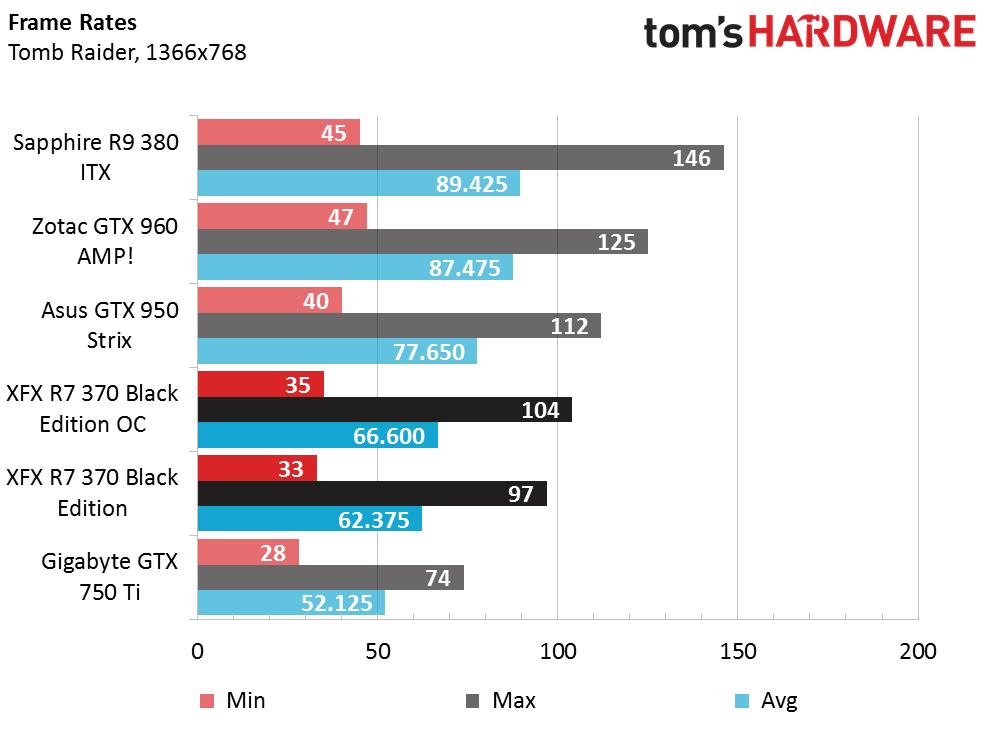

With the resolution lowered to 1366x768, the game runs better. It averages more than 60 FPS, though we still see dips into the 30s. Ultimate presets are really beyond what this card was designed for.
Overclocking yields a slight boost, but really, Nvidia's GeForce GTX 950 handles the lower resolution better, extending its lead. On the other hand, the GTX 750 Ti trails, again unable to maintain a 60 FPS average.
Current page: Gaming Benchmark Results
Prev Page Specifications & Product 360 Next Page Overclocking, Audio, Heat & PowerKevin Carbotte is a contributing writer for Tom's Hardware who primarily covers VR and AR hardware. He has been writing for us for more than four years.
-
Achoo22 It would be nice if this article had proper links for reviews of the GTX950 that was being compared. I follow Tom's pretty closely, but I don't remember seeing the review and it isn't currently listed in the best-of-the-month column. It also would've been nice, for the sake of comparison, if the article mentioned the price delta between the card in question and the board that tested highest - in this case, it would've been nice to explain that the gtx960 is about $50 more than the r7 370 instead of merely referring to it as "the pricey 960."Reply -
cinergy Tom's bashing AMD yet again. Don't worry, soon they will be out of business and you can only buy your precious nvidia.Reply -
Mac266 ReplyTurn down the fan profile and it will magically become quiet.
And hot. It's a damn thin line. -
americanbrian I suspect the aggressive fan profile is to ensure the PCB components that do not contact the heatsink receive adequate airflow. I would be willing to bet that if you relax the fan profile your memory and voltage regulators start getting a bit hot.Reply
I have to say I am distinctly unimpressed with XFX third party cooling solutions. I have had a number of DD cooled GPU's and they are really bad. For example, one revision of the 7950 has blocked vents over the VRMs so no airflow at all. I had the rear fan blow out prematurely on a 7970. And on another 7950 the card throttled stock clocks until I increased the power limit. Overall just AVOID AVOID AVOID.
I recommend Sapphire Dual-x/vapour-x, tri-x and Gigabyte windforce third party cooling. MSI-gaming style has also given me problems similar to the XFX DD (failed rear fans, better solution overall though when working). -
Cryio This review is off .... The 380 performs slower than a 960 in the majority of the tests, which is strange, since the 380 is the faster card. Then .. all AMD cards have very low and consistently low minimum framerates, which again makes no sense. The 750 Ti even is a fast or faster in some tests compared to a 370, which is insane. The 750 Ti could NEVER reach HD 7850/265 levels, yet here it reaches and outpaces the a 370, which is a 265 that has more efficient memory modules and maybe a slight overclock.Reply
Also, the fact that a 100+ MHz increase on the core and 150-200 MHz increase on the memory did nothing to performance also is very weird.
